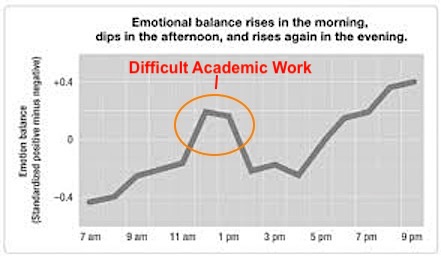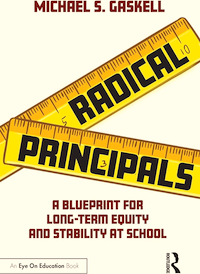The Peak Learning Times for Middle School Kids
Dr. Michael S. Gaskell is an education author and long-time middle grades principal in New Jersey.
By Mike Gaskell

Middle school is an incredibly vulnerable phase in a child’s life, and this amplifies the overall approach to timing. Dan Pink wrote an entire book about timing, zooming into the moments in a day and how our cyclical patterns of physiological responses affect our behaviors and actions over time. You can imagine this being accentuated in adolescents.
Other than infancy, children change more rapidly in middle school than at any other time in their lives. These accelerated changes include mind, body and morality. These shifts often come upon them like an avalanche. It’s no wonder they act unpredictably (or predictably?).
We sometimes do not slow down enough to recognize or acknowledge these facts of nature, feeling compelled to attempt to pack as much information into them as time permits. We are often misusing this time with our young adolescents in the middle grades.
So how do we time what we do to optimize their learning and also aid them in understanding the importance of timing their own actions during their lightning speed development? How do we help them develop a system to manage this?
Boost the Success of Middle Schoolers with Strategic Timing
While middle school involves many major physical, emotional, and intellectual changes that impact learning and achievement, there are ways to support this critical stage. Returning to Dan Pink (is there an educator who hasn’t seen his animated talk on motivation?): he explores how timing influences productivity and satisfaction. His science-based and anecdotal insights can help middle school educators better support students. (You can listen to Dan Pink discussing the best times of day for students to do academic work in this EdSurge podcast interview.)
Pink notes that teens undergo a dramatic shift in circadian rhythms, feeling most alert later at night and struggling with early mornings. Early start times can affect adolescent chronotypes. While he suggests more dramatic shifts to change the school day, and some communities are embracing this, many schools are not able to shift their times due to various challenges. This is where the internal means to support children comes in.

Assigning difficult academic work during peak energy times provides the opportunity to set students up for success. Where possible, schedule challenging courses like math and sciences in the late morning or early afternoon. Use early morning and mid-afternoon lulls for lighter coursework, physical education, music, etc. (See Is This a Morning Task?)
The order and timing of lessons matters too. Pink cites research showing students retain more when reviewing material after a break or when we space out study sessions over time. Middle school teachers can strategically schedule weekly quizzes, saving heavier content for later in the period. We also know that shorter, more frequent assessments help learners develop and master content more effectively than longer, further spaced out assessments.
Bigger projects should align with students’ mental cadences. Break them down into manageable chunks with deadlines to capitalize on bursts of motivation and sustained focus. Let students recharge with active learning breaks between project stages.
Tap into Chronobiology
By targeting research and insights from chronobiology, middle schools and their teachers can take a targeted approach to schedules and timing. With the right rhythms and structures, early adolescent students can thrive, reaching their full potential. We can even survey them (and ourselves) about timing, using simple tools like this.
References
Lahey, Jessica. “Students Should Be Tested More, Not Less.” The Atlantic. January 21, 2014.
Pink, Daniel H. When: The Scientific Secrets of Perfect Timing. Illustrated. Riverhead Books, 2018.
Wong, Alia. “Why Is Middle School So Hard for So Many People.” The Atlantic. October 7, 2019.

Mike’s books include Radical Principals: A Blueprint for Long-Term Equity and Stability at School (Routledge/EOE, 2023); and Leading Schools Through Trauma: A Data-Driven Approach to Helping Children Heal (Routledge/EOE, 2021).




































